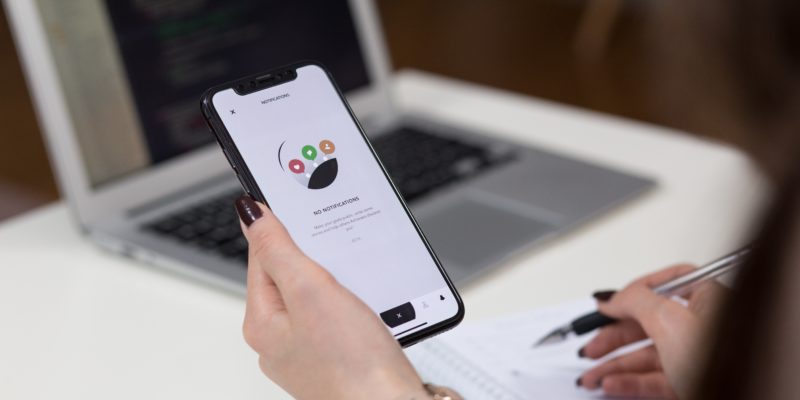We have finally reached the end of this series on how to take good notes. The final edition of this series will focus on how to apply what you have learned and notated during the previous four steps.
I will attempt to keep this post shorter if I can, however, I am not known for brevity.
Here’s a quick reference guide to take you back to the first 4 parts in case you missed those:
Part 1 – The META Method
Part 2 – The 6 Areas Of Knowledge Extraction
Part 3 – Reflection During & After The Note Taking Process
Part 4 – How To Take Evergreen Notes
How To Apply What You Learn
The main focus on this article is on application. The previous articles have prepared you for the note taking process in general. Now, we’re going to talk about how to actually use the knowledge you have gained through your note taking skills.
In essence there are three areas you are going to focus on now that you have completed the reading, study, and note taking process.
Here’s the three areas you will want to focus on to actually apply what you learn:
Let’s look at each of these 3 steps in greater detail so you can put them to immediate use.
How To Apply What You Learn: Practice
You probably have a lot of new information in your mind now. You may have created some Anki cards, you may have even created evergreen notes for yourself. All that is great, but it really isn’t using the information in the “real world”.
That is where practice comes into play.
You want to focus on 3 different areas of Practice:
- Form
- Retention
- Understanding
Form applies more to physical skills you are learning such as dancing or karate, for example. You want to practice the movements over and over again. Repitition is the key to creating muscle memory and therefore your ability to use your skills in real life situations.
Form also applies outside of the physical realm. For example, you can conduct thought experiments every day for 30 days about the new topic you are learning. Here’s a video to learn more about how to conduct thought experiments
When you conduct these thought experiments you want to really focus on thinking through all the possible outcomes that may occur and both ask questions and answer those questions.
This is such a powerful way to grow your mental ability to think through problems and really apply what you are learning.
If you want a great read on Mental Models, check out the book by Shane Parrish.
Next we’ll look again at Retention. Retention isn’t really the problem. Most of what you have read or watched or listened to is actually in your brain. The problem is that you have to recall it.
It’s sort of like we know we saved the file somewhere on our hard drive, but we just can’t remember what folder it’s in. The solution here is to store the data in a way that you are most likely to retrieve it.
This means linking, thinking, shrinking and winking.
Link together ideas. Bind them. Compare them to other things you have learned.
Think through abstract ideas and turn them into as tangible of a concept as you possibly can. This means creating metaphors, similies, and stories that help you easier recall information.
Shrink means to minimize the amount of information or data you are trying to remember and use to it’s bare essence. It’s easier to remember one person, one date, one historical fact then it is to remember 20 in one “chunk”. So, you want to shrink down the size of the chunks into memorable pieces.
This is also where story and emotion come into play. The stronger the emotional appeal, ht more likely you are to recall it. I call this ‘winking” because you want to make it playful. Also, think about flirting. You are much more likely to remember a flirty conversation than a business talk. By winking to yourself, you increase the odds of being able to later recall what you have learned.
Finally, let’s look at Understanding. This is a pretty simple aspect of Practice. You want to make sure to practice your newfound knowledge on other people. Talk to them and teach them what you have learned. You will quickly find gaps of knowledge and that’s good.
Now you can go back and study those areas and come back and teach again to see if you finally fully understand the full topic.
How To Apply What You Learn: Analysis
An analysis is the continued study of material you have learned or acquired. You want to always be analyzing what you have read and learned previously.
One reason for this is that a lot of informaiton is unreliable. Unfortunately, we are fed data from the internet, from wikipedia, from friends, and books that may not be accurate. We can achieve a higher rate of data accuracy by consuming more information.
This, of course, isn’t easy and takes up more time. But it is very important. The more data you have at your fingertips, the more you can analyze and decipher.
Another core component to analysis is to continue to break down all theories or hypothesizes to their bare essentials. You ultimately want to be able to focus on one aspect of an idea… the core idea or main belief you are to add to your belief backlog.
This goes well with the Practice step as well. You want to convert large ideological chunks into malleable pieces and blocks of knowledge. Knowledge blocks are easier to contain, control, and confirm.
And they are much easier to build upon. Here’s a great read on knowledge building blocks by Tiago Forte.
How To Apply What You Learn: Synthesis
And that brings us to the final step to apply what you learn. The great and powerful synthesis. Here’s a good working definition of syntheses from Google:
The combination of ideas to form a theory or system.
Defintion of Synthesis
I love that defintion because that is what must be done to turn knowledge into application. In this step, the goal is to take what you have learned from your continued analysis and start combining it into other ideas or concepts you have learned or created.
It is literally the act of creating new knowledge from old knowledge. The interesting part is you don’t have to necessarily even create or discover anything new. Rather, you are putting together different areas of knowledge that perhaps haven’t been connected yet.
As an example, I have created a series of 5 blog posts on How To Take Good Notes and there really isn’t anything “new” I have added other than coming up with interesting words and phrases to explain ideas first discovered or shared by others. From the META Method to Practice, Analysis, Synthesis... these ideas are not my own, but the branding is.
It’s equivalent to white labeling a product. You can modify the product slightly, but mostly you are creating new packaging and new marketing. Call it White Labeling Ideas. By adding multiple ideas together and explaining it in a new way, you have in essence creating a new product by white labeling the ideas of others.
Here’s a quick description of white labeling from SmartyAds:
“White labeling is producing the products and services and their further rebranding and advertising under another brand’s name. The aim of it is increasing customer loyalty and trust, saving resources and time necessary for new the new solution development and deployment.”
Of course, also give contribution to where your ideas came from. There are entire books that are nothing more than the white labeling of other people’s ideas.
And by this art of synthesis, you will also end up creating your own unique ideas, theories, and systems, but that’s just a side benefit. In the end, your ability to speak clearly on a wide range of topics, your ability to write and explain your thoughts with clarity, and the amount of knowledge you can apply to your life is worth all the effort you have put in.
I hope you have enjoyed this series as much as I’ve enjoyed writing it. As always, please leave comments below and also make sure you follow me on Twitter for more info around notes, productivity, business, and more.
My Twitter –> Michael Giannulis






